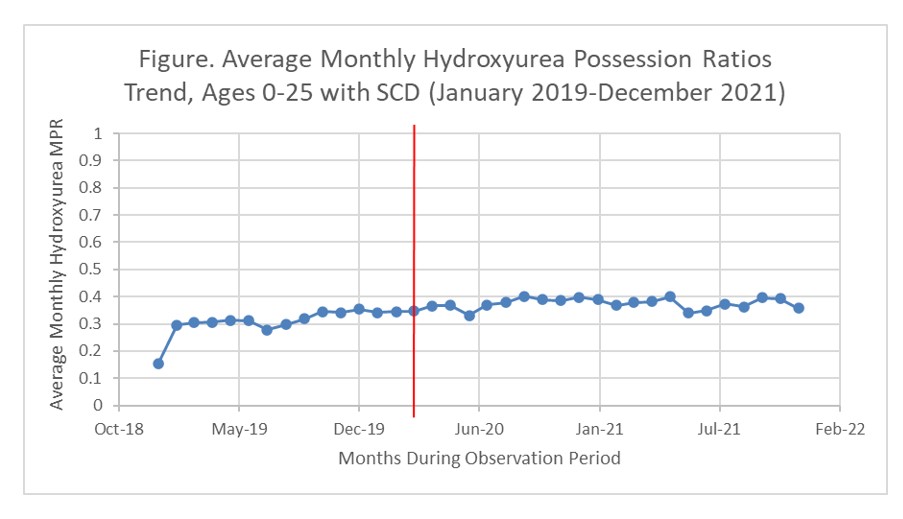Health Services Research
Session: Health Services Research 4: Population Monitoring and Management
248 - Changes in Hydroxyurea Adherence During the COVID 19 Pandemic among Children and Young Adults with Sickle Cell Disease
Sunday, May 5, 2024
3:30 PM - 6:00 PM ET
Poster Number: 248
Publication Number: 248.1947
Publication Number: 248.1947

Melinda R. Rushing, PhD (she/her/hers)
Postdoc Research Fellow
University of Michigan Medical School
Ann Arbor, Michigan, United States
Presenting Author(s)
Background: National recommendations advise hydroxyurea therapy for children and young adults with sickle cell disease (SCD) to reduce the risk of pain crises and acute chest syndrome, complications exacerbated by COVID 19 infections. The impact of the COVID 19 pandemic on adherence to hydroxyurea among people with SCD is unknown. We hypothesized that children and young adults with SCD would have increased hydroxyurea adherence during the pandemic.
Objective: Evaluate changes in hydroxyurea adherence among children and young adults with SCD during the pandemic.
Design/Methods: Data were acquired from the Michigan Sickle Cell Data Collection Program, which combines multiple data sources to identify and follow healthcare utilization and outcomes for those with SCD in Michigan. The observation period was 1/1/2019-12/31/2021. The inclusion criteria were continuous Medicaid enrollment, ≤25 yrs. of age, SCD via validated case definitions, and ≥1 filled hydroxyurea prescription during the study. Monthly hydroxyurea adherence was assessed using medication possession ratios (MPR) (total days filled prescription / total number of days in the month), accounting for inpatient admissions and overlapping prescriptions. Changes in monthly MPR during the pandemic were evaluated using a linear mixed model with generalized estimating equations to account for multiple observations per person. We included a binary indicator for during pandemic (≥ 4/2020) or before pandemic. Models were adjusted for sex, age, and race. Interactions were evaluated between 1) age and time (months), and 2) the start of the pandemic and time.
Results: 2,234 individuals with SCD were considered; 1,940 (86%) identified as Black, 1,146 (51%) were female, and mean age was 11 yrs. (SD=8.53). The final sample consisted of 293 (13%) individuals who met inclusion criteria. At the start of the pandemic, children and young adults increased their hydroxyurea adherence (MPR increase: .125 p<.01, ~3.75 days per month), but as the pandemic persisted, adherence declined for all ages (interaction between the start of the pandemic and time effect on MPR: -.0078 p<.001) with older individuals having the greatest decline (interaction between age and time effect on MPR: -.0003 p<.01).
Conclusion(s): The initial average hydroxyurea adherence increase at the start of the pandemic did not persist. Identifying the drivers of the initial increase and the characteristics of those individuals who sustained their increased adherence for a longer time, could reveal new intervention targets.
.jpg)

